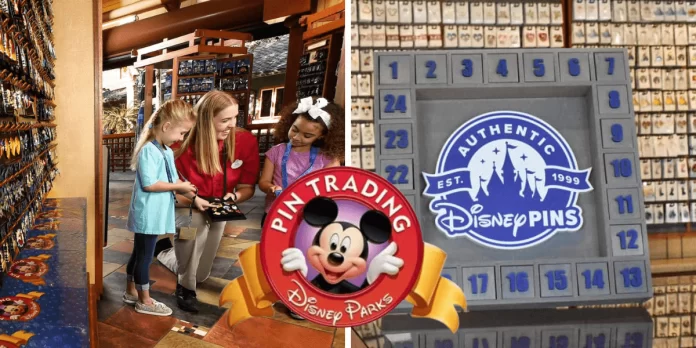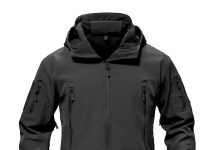A trip to one of Disney’s parks is filled with countless magical moments and memories. The rides, characters, and even the food add to the experience that you’ll cherish for a lifetime. But most attending a Disney park like to take home some souvenirs to remember the wonderful time spent with friends, family, and the colorful cast of characters they meet along the way. And one of the most sought-after keepsakes is an official Disney trading pin.
An Unexpected Overnight Success
The tradition began at the turn of this Century with the Millennium Celebration at the Disney World Resort in Florida. The company designed a special pin for the historical event that was given to attendees. Unexpectedly, the pin became incredibly popular and saw people selling them for hundreds of dollars on secondary markets like eBay. Disney responded to this success by continuing to release new pins at park events. Before they knew it, they had created something special.
With the success of their pins, Disney quickly started to expand their presence across all their properties. This included not just the parks but their resorts and even cruises. Pins continued to be made for special events, but the company also introduced them into their souvenir shops and as carnival prizes as demand grew.
Today, Disney trading pins are one of the most popular keepsakes that the company offers to its fans. Traders flood parks each year with pins, both new and old, looking to expand their collection. The demand reached such chaotic levels in 2002 that Tokyo Disneyland had to permanently suspend the practice because it negatively affected the park experience.
What Makes Them Magical
So what makes people go crazy for these pins? In a word, variety. Disney doesn’t just create a pin and sell it for eternity. Their pins come in limited amounts and once they’re sold, they move on to the next design.
Many pins feature holidays and events that are being celebrated at the parks. For instance, an annual pin is created for both Mother’s Day and Father’s Day. The design changes each year and features new characters. Some pins celebrate milestones like an anniversary of a movie release. These pins are only sold during the events and are limited in number (the back of the pin will often reveal how many were released).
Beyond the traditional holidays and anniversaries, Disney has an almost unlimited number of characters they can use as their influence has expanded over the past decade. So beyond the traditional characters like Mickey Mouse, Disney produces pins for the Marvel Universe, Star Wars, and Pixar films which they own the intellectual property rights to.
Quality is integral to the Disney trading pin experience. Craftsmanship is second to none, with errors and defects being almost unheard of on these shiny souvenirs. In fact, it’s one of the ways fans can spot the flood of fakes that fill secondary marketplaces.
Disney pins are almost always made as hard enamel instead of soft enamel, a cheaper process many counterfeiters use to hoodwink faithful Disney collectors. While the difference in the pin types is quite complicated to explain, there are some ways the average collector can spot a fake.
With decades of experience in the industry, Jessica Marshall, President of All-Star Trading Pins advises people to carefully inspect the pins before purchase, “The backs of Disney pins feature a waffling pattern with the iconic Mickey ears. Be sure that the pattern has no errors in it, as fakes typically overlook minor details. You can also rub your finger over the front side to help determine whether the pin is soft enamel or hard enamel. The pins Disney uses will feel smoother due to their high-end sanding and polishing. Common fakes have pronounced ridges and can be rough along the sides”.
How it Works
While collecting and displaying your pin collection is the goal, much of the fun is in the trading process. Trading pins can be purchased at official Disney stores or licensed retailers. They’re also given out at special events or as prizes for games. Once you have some pins in your collection, it’s time to go trading.
Visitors can trade with other patrons, but the real fun is interacting with the countless cast members of the park. These cast members wear lanyards that are adorned with various pins. The color of the lanyard helps determine which age group the pins are for, although most will trade with adults and children.
After approaching a cast member about a trade, the cast member must trade one of their pins for one of yours. Trades are 1-for-1, and there are kiosks throughout the park where trading can also be done. Cast members at kiosks are more than happy to help answer any questions you have.
There are some exceptions. The pins must be official Disney-branded pins made of metal and include a clasp on the back. They can’t be broken or damaged either. Older pins from the ’80s are not tradeable. Up to two pins per cast member per day is permitted. A pin-trading etiquette brochure can be found at all their parks for additional help.
A Tradition With No End in Sight
For fans of these colorful enamel pins, this tradition appears to be here to stay. Disney continues to produce new designs at a frenetic pace, and fans are rushing to collect their favorites. It has become one of the most popular social activities at the parks.
If you’re a fan of collecting or just looking to bring home some memorable keepsakes from your next vacation, take some time to ingratiate yourself into the world of Disney pin trading.






